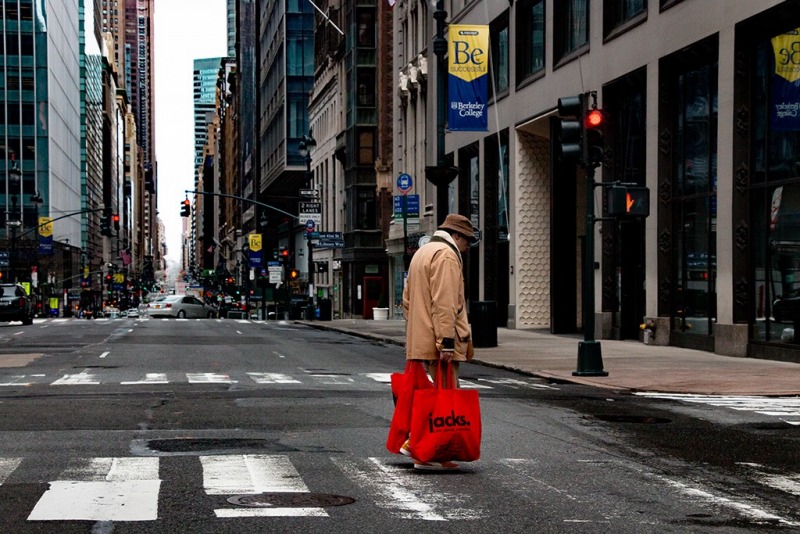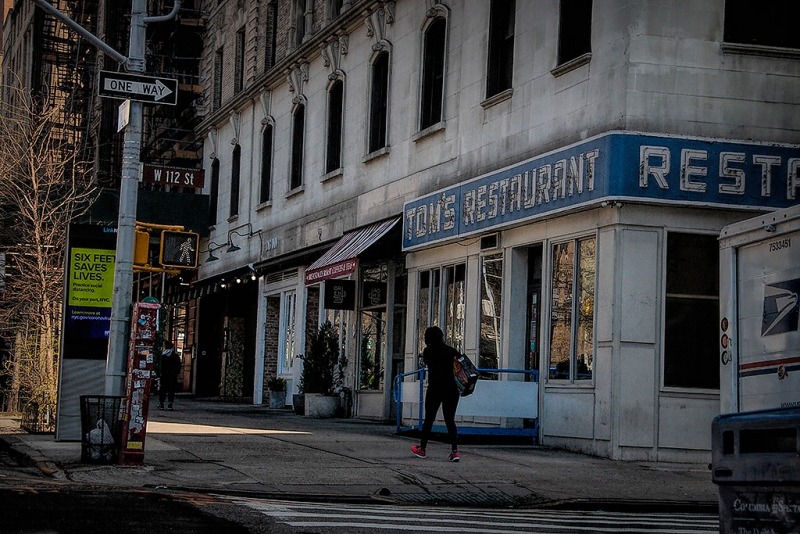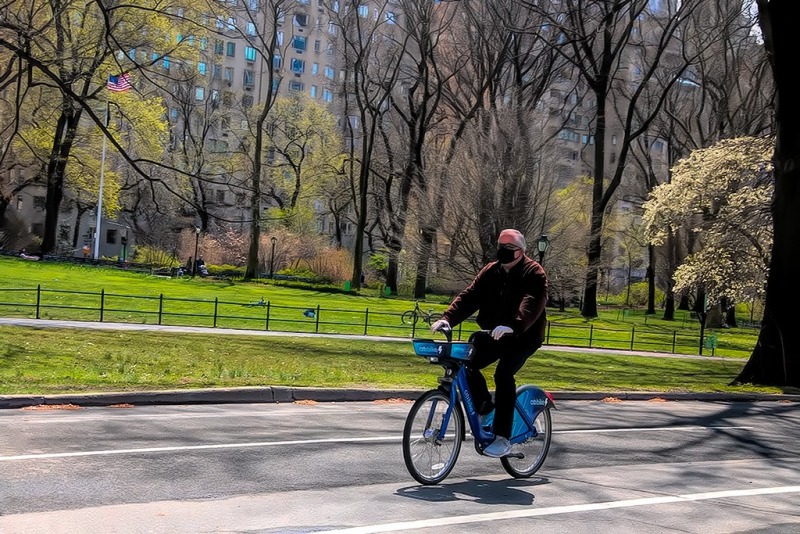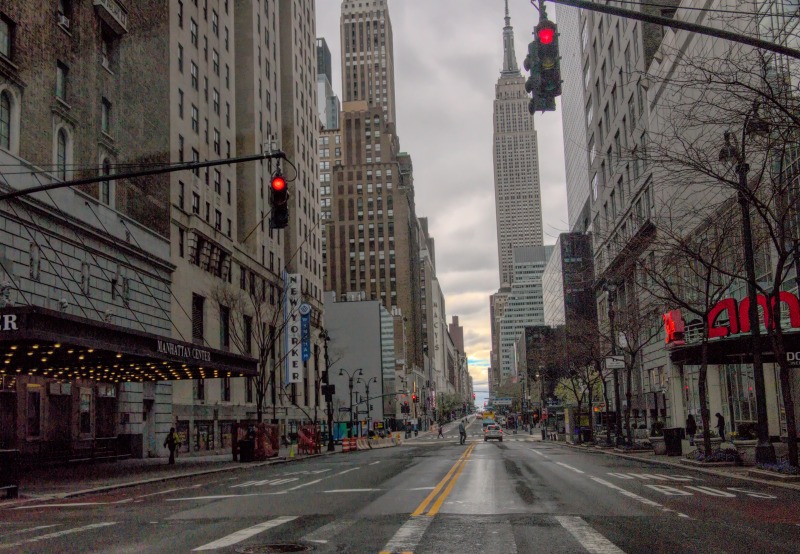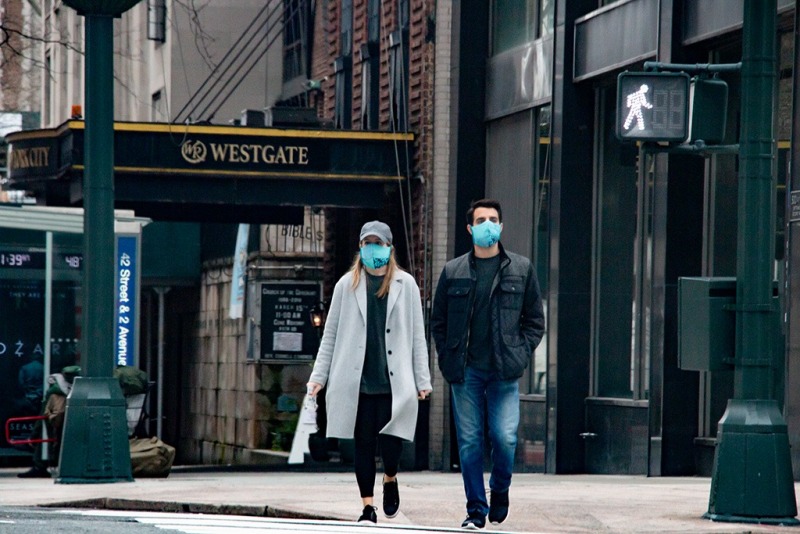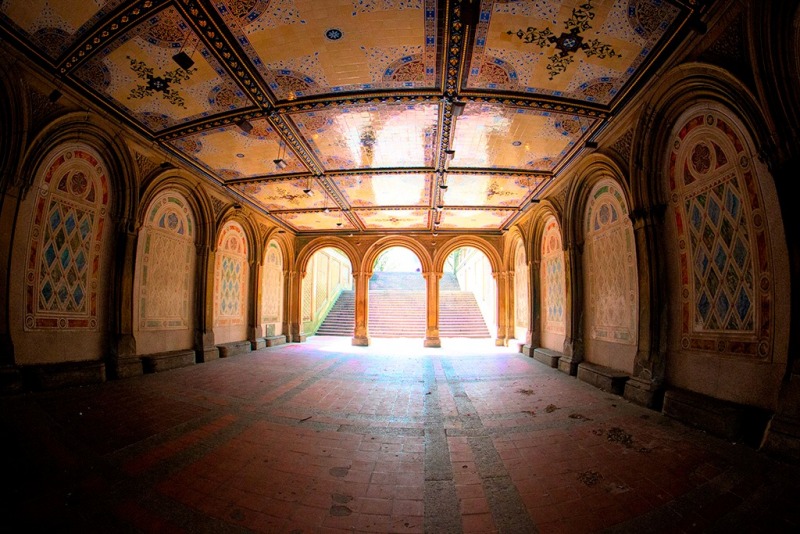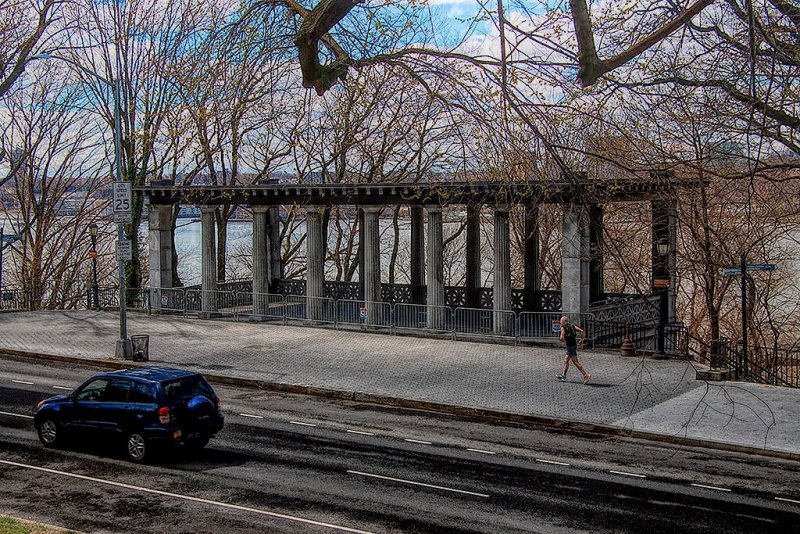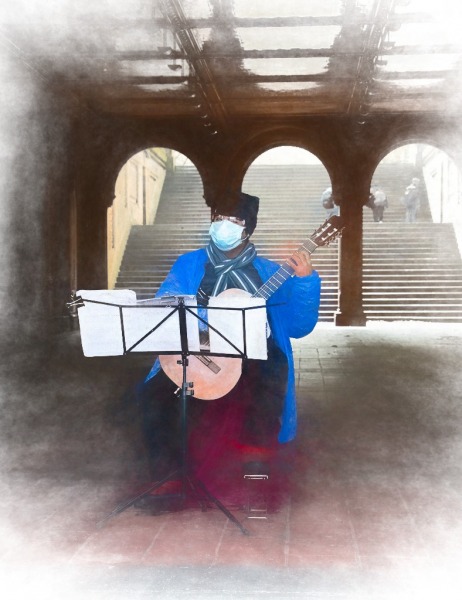In early April, a couple of weeks after New York State went into “pause” mode, I drove the 25 or so miles south from my home in Westchester County to midtown Manhattan. I had been hearing that New York City was a ghost town and I wanted to take pictures to document this historical event that had driven most of us indoors indefinitely.
With no traffic I got to midtown in about 35 minutes, whereas heavy volume on the roads would normally stretch that trip to at least an hour or so. Years ago I learned how to drive in Brooklyn and Manhattan, and the empty streets were eerie and disorienting. It sometimes felt like I shouldn’t be where I was, driving on this empty street that perhaps was off limits to cars. I hadn’t realized how much one follows the car ahead in a crowded place like New York and how little attention we pay to stoplights and traffic signs. In the couple of hours that I was in Manhattan I saw mostly only police cars surveilling their respective precincts.
Aside from being able to make it across town and back, south and back north, all over the city, in no time, there were also an unusual number of legal parking spaces or at least places to pull over that on any other Saturday would have been otherwise occupied. Multiple times I was able to pull over to the curb, open my car door, jump out, take a few shots, and jump back in. Sometimes I was even able to do this and STILL make the light before it turned red. All the things that make driving in Manhattan a pain were gone.
When I wanted to stop and actually walk around, I was able to quickly find free legal parking spots where I wanted them to be. Once I parked by Central Park, in the East 70s, and walked around the park for an hour. As I headed north to go back home, I considered stopping by Riverside drive to walk around and take some pictures of Grant’s tomb. Knowing it was around 122nd Street, I began looking out of the corner of my eye for open space. Lucky me! There were several spaces on 122nd and Broadway. I pulled over, grabbed my camera, and went for a quick walk. My capture of Riverside drive with one car and one jogger is a good example of what the city was like that day. A street that would normally be full of traffic, pedestrians, dog walkers, joggers, etc., looked like a side street in a small town. Central Park could have been a bucolic park in the country for how many people were there, and pedestrians crossing the street were solo rather than part of the usual mobs that move en masse into the crosswalks. Street performers played to tiny audiences, and people had benches and shade trees all to themselves. Many people were wearing masks, a blatant reminder of the virus that had already killed thousands.
It has now been several weeks since that day. Slowly, New York is reopening, although downstate will still take awhile as it is more populated and has had the bulk of the illnesses and deaths in the state. As the weather has warmed more people have ventured out for walks or bike rides, and more people are wearing masks. It has become clear that some form of “lockdown” will be the norm for the time being and we have to adjust our lives to this—“normal” will not be here anytime soon.But even in my wish for normalcy, the next time I’m pushing through city crowds I’ll yearn for the day I drove into Manhattan during Coronapocalypse and saw the city as it was in days of yore, with fewer people, even fewer cars, and wide-open space. The day I got pictures without crowds. The day New York was a ghost town.
![]()

